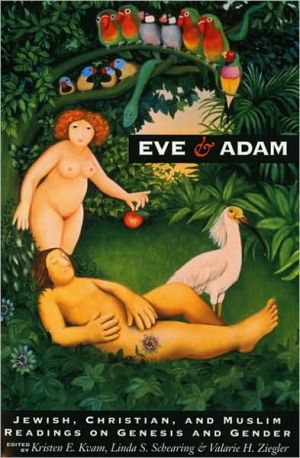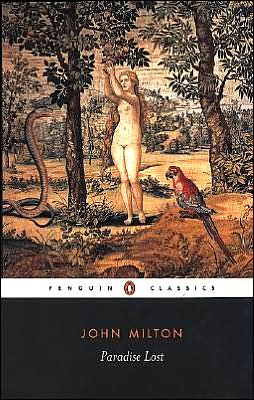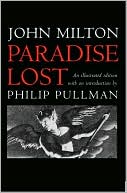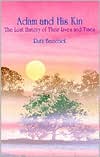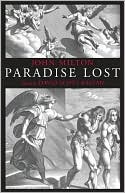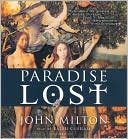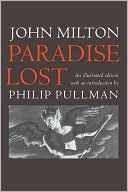Eve and Adam: Jewish, Christian, and Muslim Readings on Genesis and Gender
"The editors have performed a great service in making widely available a documentary history of the interpretation of the Eve and Adam story." —Publishers Weekly\ "This fascinating volume examines Genesis 1-3 and the different ways that Jewish, Christian, and Muslim interpreters have used these passages to define and enforce gender roles.... a 'must'... " —Choice\ "Wonderful! A marvelous introduction to the ways in which the three major Western religious traditions are both like, and unlike...
Search in google:
No other text has affected women in the western world as much as the story of Eve and Adam. This remarkable anthology, which includes both classic religious texts as well as pieces written especially for this volume, surveys more than 2,000 years of Jewish, Christian, and Muslim commentary and debate on the biblical story that continues to raise fundamental questions about what it means to be a man or a woman. Publishers Weekly In western culture and religion, the Genesis story of Eve and Adam has established and dominated views about gender roles. A long history of interpretation of Genesis 1-3 exists in all three of the great monotheistic religions. In this anthology, the editors have gathered primary documents from each of these traditions to examine this history of interpretation. Each section contains a brief historical essay that sets the readings in context, and the editors briefly introduce the individual writings. Chapter 1 offers selections from Genesis 1-5. Chapter 2 provides documents of Jewish post-biblical interpretation, including apocryphal texts like Sirach and pseudepigraphical texts like the Life of Adam and Eve. Chapter 3 contains rabbinic interpretations of Genesis 1-3, including midrashim like the one attributed to Rabbi Joshua ben Karhah: "It teaches you through what sin that wicked creature inveigled them, because he saw them engaged in their natural function, he [the serpent] conceived a passion for her." Chapter 4 contains early Christian interpretations ranging from biblical texts (1 Corinthians 15:21-22) to the theological writings of Tertullian and Augustine. Chapter 5 collects readings of the story from the Middle Ages, including various readings from the Qur'an and commentaries by Islamic theologians. The writings of Martin Luther and other Protestant reformers on Eve and the role of woman are gathered in Chapter 6. The writings in Chapter 7 demonstrate the ways that various 19th-century American social movements, like abolition and women's suffrage, and new religious groups, like the Shakers and the Christian Scientists, interpreted the Genesis story. The final chapter includes writings from 20th-century Christians, Jews and Muslims demonstrating that the debate about the meanings of Genesis 1-3 is far from over. The editors have performed a great service in making widely available a documentary history of the interpretation of the Eve and Adam story. (Mar.)
Acknowledgments General Introduction\ 1. Hebrew Bible Accounts Introduction Selections and Commentary Genesis 1:1-2:4a Genesis 2:4b-3:24\ Genesis 4:1-4:2\ Genesis 5:1-5:5\ 2. Jewish Postbiblical Interpretations (200s BCE-200 CE)\ Introduction Apocrypha (Deuterocanon) and Pseudepigrapha\ 1 Enoch (c. 200s BCE)\ Sirach (c. 180 BCE)\ Jubilees (c. mid-100s BCE)\ Wisdom of Solomon (c. 30s BCE-100 CE)\ 2 Esdras (c. 100 CE)\ 2 Baruch (c. early 100s CE)\ Life of Adam and Eve (c. late 100s-400 CE)\ Jewish Philosophers and Historians Philo, Questions and Answers on Genesis (c. 20s-40s CE)\ Josephus, Jewish Antiquities (c. 90s CE)\ 3. Rabbinic Interpretations (200-600s CE)\ Introduction Midrash Rabbah and Babylonian Talmud Themes on Humankind’s Creation Themes on the Disobedience Themes on Adam and Eve after Eden Themes on Humankind in the Post-Edenic World Targums Targum Onqelos to Genesis (c. 100s)\ Targum Pseudo-Jonathan: Genesis (pre 600)\ 4. Early Christian Interpretations (50-450 CE)\ Introduction New Testament (c. 50-150 CE)\ "Egalitarian" Texts\ 1 Corinthians 15:21-22\ Galatians 3:27-28\ Ephesians 4:22-24\ Colossians 3:9-11\ "Hierarchical" Texts\ 1 Corinthians 11:3-12\ 2 Corinthians 11:2-6\ Ephesians 5:21-6:9\ 1 Timothy 2:8-15\ Extracanonical Sources The Gospel According to Thomas (c. 50-150)\ The Gospel According to Philip (pre 350)\ The Acts of Paul and Thecla (c. 100s)\ Church Fathers Theophilus, "Apology to Autolycus" (late 100s)\ Anastasius Sinaita, Anagogicarum Contemplationum (c. 150-250)\ Tertullian, "On the Apparel of Women" (c. 202)\ Origen, "Homilies on Genesis: 1 and 6" (c. 240)\ Ambrose, "Paradise" (c. 375)\ John Chrysostom, Homilies on Genesis (c. 386)\ Augustine, The Literal Meaning of Genesis (begun c. 401)\ 5. Medieval Readings: Muslim, Jewish, and Christian (600-1500 CE)\ Introduction Islam The Qur’an (c. 610-632)\ Surah 2, The Cow: 2:29-38, 222-223, 228\ Surah 4, Women: 4:1, 3, 34-36, 116-120, 128-130\ Surah 7, The Heights: 7:19-27, 189-190\ Surah 15, Al-Hijr: 15:26-45\ Surah 20, Tâ Hâ: 20:115-123\ Surah 23, The Believers: 23:12-14\ Surah 24, Light: 24:30-33\ Surah 30, The Romans: 30:20-22\ Surah 49, The Private Apartments: 49:13\ Muslim Interpretations Al-Tabari, Commentary on the Qur’an\ (c. late 800s)\ Al-Kisa I, The Tales of the Prophets of al-KisaI (collected c. 1200)\ Ibn Al’ Arabi, The Bezels of Wisdom (c. 1200s)\ Judaism Midrashic Themes:\ The Fathers According to Rabbi Nathan (c. 600-700s)\ Pirke de Rabbi Eliezer (c. 700-800s)\ Alphabet of Ben Sira (c. 700-900s)\ The Chronicle of Jerahmeel (c. 1300s)\ Rashi, Commentary on the Pentateuch (c. late 100s)\ Nahmanides, Commentary on the Torah (c. 1200s)\ Maimonides, Guide for the Perplexed (c. late 1100s)\ Isaac Kohen, Treatise on the Left Emanation (c. 1100s)\ The Zohar, Bereshit (c. late 1200s)\ Christianity Thomas Aquinas, Summa Theologiae (begun c. 1260)\ Christine de Pizan, Letter of the God of Love (1399)\ Heinrich Kramer and James Sprenger, Malleus Maleficarum (1496)\ 6. Interpretations from the Protestant Reformation (1517-1700 CE)\ Introduction Balthasar Hubmaier, Freedom of the Will (1527)\ Martin Luther, Lectures on Genesis (begun 1535)\ John Calvin, Commentaries on the First Book of Moses Called Genesis (c. 1555)\ Margaret Fell, WOMENS SPEAKING Justified, Proved and Allowed by the Scriptures (1666)\ John Milton, Paradise Lost (1667)\ 7. Societal Applications in the United States (1800s CE)\ Introduction Antebellum Debates on Household Hierarchies Proslavery and Antislavery Views Fred A. Ross, Slavery Ordained of God (1857)\ Samuel B. Howe, Slaveholding Not Sinful (1856)\ Josiah Priest, Bible Defence of Slavery (1851)\ Rev. Charles Elliott, Sinfulness of American Slavery (1851)\ Women Make the Case for Equality Sarah Grimké, Letters on the Equality of the Sexes and the Condition of Woman (1838)\ Elizabeth Cady Stanton, ed. The Woman’s Bible (1895, 1898)\ New Religious Movements on Gender Relations Shakers Frederick Evans, Autobiography of a Shaker (1888) and Compendium (1867)\ Paulina Bates, The Divine Book of Holy and Eternal Wisdom (1849)\ Oneida Community John Humphrey Noyes, History of American Socialism (1870)\ Christian Science Mary Baker Eddy, Science and Health with Key to the Scriptures (c. 1875)\ 8. Twentieth Century Readings: The Debates Continue Introduction Hierarchical Interpretations Council on Biblical Manhood and Womanhood, "The Danvers Statement" (1987)\ Susan T. Foh, "The Head of the Woman Is the Man" (1989)\ Joseph H. Hertz (ed.), The Authorized Daily Prayer Book (1945)\ Samuel H. Dresner, "Homosexuality and the Order of Creation" (1991)\ Sayyid Abu al-A’la Mawdudi, Towards Understanding the Qur’an (1942-1972)\ Egalitarian Interpretations Sun Ai Lee Park, untitled poem Judith Plaskow, "The Coming of Lilith: Toward a Feminist Theology" (1979) and "Lilith Revisited" (1995)\ Phyllis Trible, "Eve and Adam: Genesis 2-3 Reread" (1973) and "Not a Jot, Not a Tittle: Genesis 3-3 after Twenty Years" (1995)\ Jouette Bassler, "Deception in the Garden: 1 Timothy 2:11-15" (1994)\ Ann Holmes Redding, "Not Again: Another Look at the Household Codes" (1995)\ Riffat Hassan, "The Issue of Woman-Man Equality in the Islamic Tradition" (1993)\ Nancy Datan, "Forbidden Fruits and Sorrow" (1986)\ Appendix: The Preadamite Theory and the Christian Identity Movement: Race and Genesis 1-3 at the Turn of the Millennium Introduction Nineteenth Century Preadamite Approaches A Minister [D. G. Phillips], "Nachash: What Is It? or An Answer to the Question, ‘Who and What Is the Negro?’ Drawn from Revelation" (1868)\ Prospero, "Caliban: A Sequel to ‘Ariel’" (1868)\ Genesis and White Supremacy in the Twentieth Century Wesley A. Swift, "God, Man, Nations & the Races" (no date)\ Richard G. Butler, "Who, What, Why, When and Where: The Aryan Nations" (no date) and "The Aryan Warrior"(no date)\ Index
\ Publishers Weekly - Publisher's Weekly\ In western culture and religion, the Genesis story of Eve and Adam has established and dominated views about gender roles. A long history of interpretation of Genesis 1-3 exists in all three of the great monotheistic religions. In this anthology, the editors have gathered primary documents from each of these traditions to examine this history of interpretation. Each section contains a brief historical essay that sets the readings in context, and the editors briefly introduce the individual writings. Chapter 1 offers selections from Genesis 1-5. Chapter 2 provides documents of Jewish post-biblical interpretation, including apocryphal texts like Sirach and pseudepigraphical texts like the Life of Adam and Eve. Chapter 3 contains rabbinic interpretations of Genesis 1-3, including midrashim like the one attributed to Rabbi Joshua ben Karhah: "It teaches you through what sin that wicked creature inveigled them, because he saw them engaged in their natural function, he [the serpent] conceived a passion for her." Chapter 4 contains early Christian interpretations ranging from biblical texts 1 Corinthians 15:21-22 to the theological writings of Tertullian and Augustine. Chapter 5 collects readings of the story from the Middle Ages, including various readings from the Qur'an and commentaries by Islamic theologians. The writings of Martin Luther and other Protestant reformers on Eve and the role of woman are gathered in Chapter 6. The writings in Chapter 7 demonstrate the ways that various 19th-century American social movements, like abolition and women's suffrage, and new religious groups, like the Shakers and the Christian Scientists, interpreted the Genesis story. The final chapter includes writings from 20th-century Christians, Jews and Muslims demonstrating that the debate about the meanings of Genesis 1-3 is far from over. The editors have performed a great service in making widely available a documentary history of the interpretation of the Eve and Adam story. Mar.\ \
